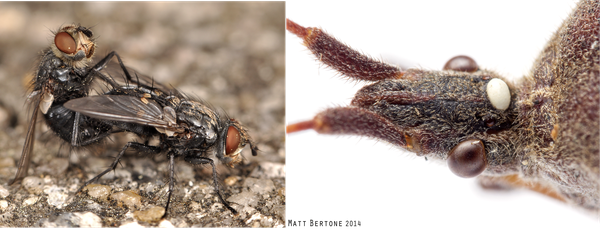The 8-Second Trick For Eco Bed Bug Exterminators Dc
6 Simple Techniques For Eco Bed Bug Exterminators Dc
Table of ContentsGetting The Eco Bed Bug Exterminators Dc To Work8 Simple Techniques For Eco Bed Bug Exterminators DcTop Guidelines Of Eco Bed Bug Exterminators DcLittle Known Facts About Eco Bed Bug Exterminators Dc.The Main Principles Of Eco Bed Bug Exterminators Dc
Due to the fact that chemicals are poisonous, they are also potentially hazardous to people, pets, various other organisms, and the environment. People that utilize chemicals or routinely come in contact with them must understand the relative poisoning, potential health and wellness effects, and preventative measures to reduce direct exposure to the products they use. Hazard, or risk, of utilizing chemicals is the possibility for injury, or the degree of danger associated with making use of a chemical under a given set of problems.
Applicators can reduce or nearly remove exposure-- and hence minimize risk-- by adhering to the label directions, using personal safety garments and devices (PPE), and dealing with the pesticide correctly. As an example, greater than 95 percent of all chemical exposures come from facial direct exposure, mainly to the hands and forearms. By using a set of unlined, chemical-resistant gloves, this sort of exposure can be virtually eliminated.
The harmful effects that take place from a single direct exposure by any type of path of entrance are labelled "acute effects." The four paths of direct exposure are facial (skin), inhalation (lungs), oral (mouth), and the eyes. Severe toxicity is identified by taking a look at the facial poisoning, inhalation poisoning, and oral toxicity of guinea pig.
Eco Bed Bug Exterminators Dc Fundamentals Explained
Intense poisoning is determined as the quantity or focus of a toxicant-- the a.i.-- called for to eliminate 50 percent of the animals in a test populace. This step is generally revealed as the LD50 (dangerous dose 50) or the LC50 (deadly concentration 50). Furthermore, the LD50 and LC50 values are based on a solitary dosage and are videotaped in milligrams of pesticide per kg of body weight (mg/kg) of the test animal or partly per million (ppm).
The reduced the LD50 or LC50 value of a pesticide item, the better its poisoning to people and pets. Chemicals with a high LD50 are the least toxic to human beings if utilized according to the instructions on the product tag. The persistent toxicity of a pesticide is figured out by subjecting test animals to long-term direct exposure to the energetic component.
The persistent toxicity of a chemical is harder than acute poisoning to determine via research laboratory evaluation. Products are categorized on the basis of their loved one intense toxicity (their LD50 or LC50 values). Chemicals that are categorized as extremely hazardous (Poisoning Category I) on the basis of either dental, dermal, or breathing toxicity should have the signal words DANGER and poisonous substance printed in red with why not try these out a head and crossbones symbol plainly showed on the front panel of the package label.
The severe (single dose) oral LD50 for chemical products in this group ranges from a trace quantity to 50 mg/kg. Direct exposure of a few decreases of a material taken orally could be deadly to a 150-pound individual. https://experiment.com/users/ecobedbug3xt. Some chemical items have just the signal word threat, which tells you absolutely nothing concerning the intense poisoning, just that the item can trigger severe eye damages or serious skin irritation
Top Guidelines Of Eco Bed Bug Exterminators Dc
In this group, the acute dental LD50 varieties from 50 to 500 mg/kg. A tsp to an ounce of this material can be fatal to a 150-pound person (exterminator). Chemical products identified as either slightly hazardous or fairly safe (Poisoning Groups III and IV) are called for to have the signal word CAUTION on the pesticide tag

All chemical toxicity values, consisting of the LD50, can be discovered on the item's Product Safety Information Sheet (MSDS) - bed bug heat treatment. Pesticide tags and MSDS can be obtained from sellers or produces. Furthermore, many products also know that can be found online. The symptoms of pesticide poisoning can vary from a light skin irritation to coma or perhaps death.
Because of possible health and wellness issues, pesticide individuals and handlers need to identify the common indicators and symptoms of pesticide poisoning. The impacts, or signs and symptoms, of pesticide poisoning can be generally specified as either topical or systemic.
The Eco Bed Bug Exterminators Dc Diaries
Dermatitis, or inflammation of the skin, is accepted as the most typically reported topical result connected with pesticide exposure. Some people tend to cough, wheeze, or sneeze when exposed to chemical sprays.
This sign typically subsides within a few minutes after a person is removed from the exposure to the toxic irritant. A response to a chemical item that triggers a person not only to sneeze and cough however additionally to establish severe intense respiratory symptoms is more likely to be a true hypersensitivity or sensitive reaction.
Systemic results are fairly various from topical impacts. They frequently occur far from the original factor of contact as an outcome of the pesticide being soaked up right into and dispersed throughout the body. Systemic impacts commonly include nausea, throwing up, tiredness, headache, and intestinal tract conditions. In advanced poisoning situations, the individual might experience changes in heart price, problem breathing, convulsions, and coma, which could bring about death.